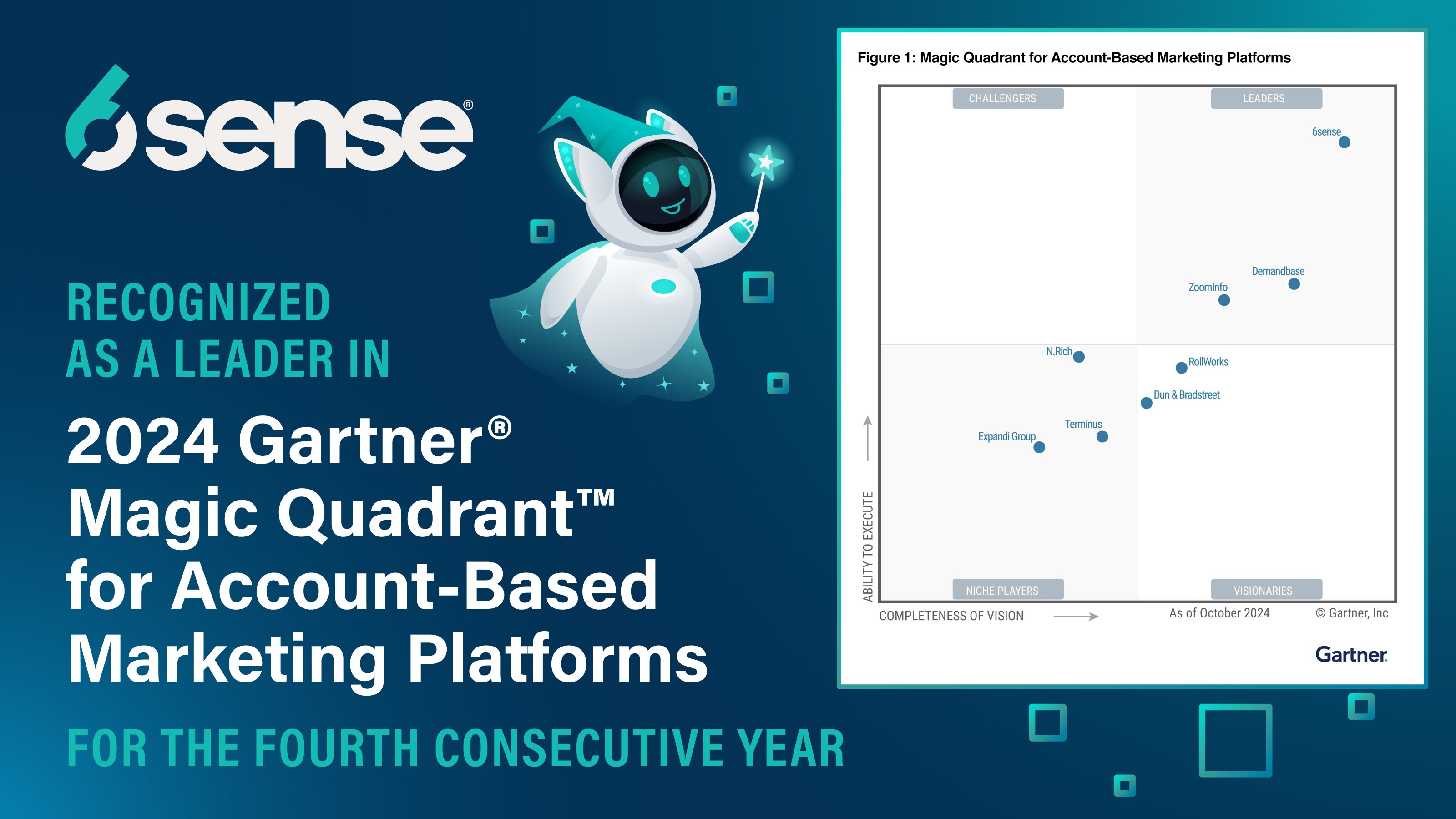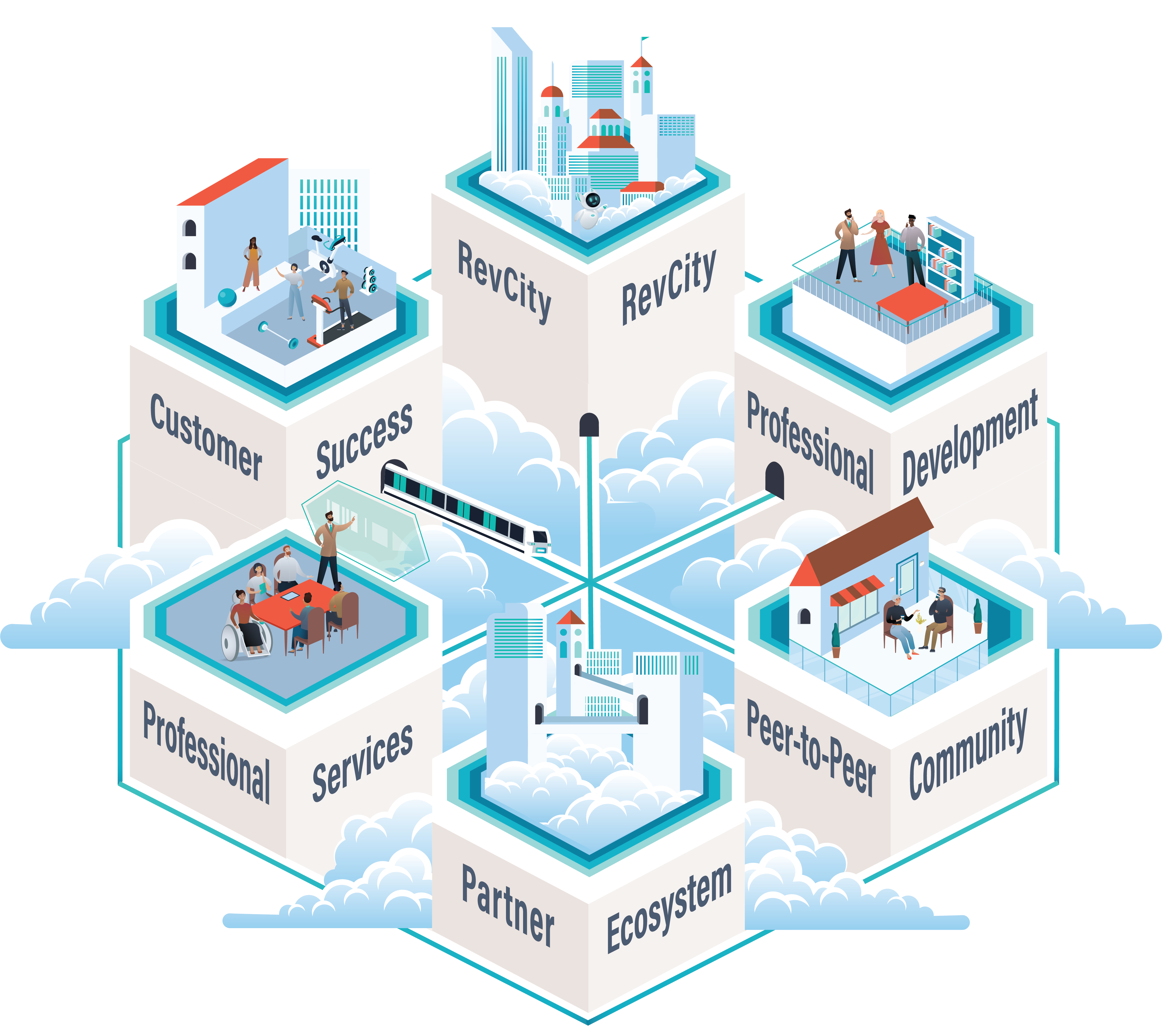The responsibilities of B2B marketing teams have shifted dramatically in recent years. Whereas a marketers’ primary goal was once to generate sufficient leads for sales teams to meet corporate revenue goals, the silos between sales and marketing are breaking down rapidly. In the modern organization, every go-to-market team is expected to contribute to the company’s bottom line — and therefore they all must be oriented towards revenue.
Eighty-three percent of CEOs today expect their CMOs to drive revenue growth. That leaves no room for blind guessing, unreliable assumptions, or tainted data. Instead, the paradigm shift in B2B marketing demands that marketers connect their tactics to revenue through thorough pipeline planning, detailed tracking, and accurate forecasting; it also requires a revolution in revenue-oriented technology, or what is coming to be known as the growing “RevTech” movement.
Distinguishing marketing tactics from marketing goals
Conventionally, CMOs’ focus on generating a sufficient volume of leads based on past conversion rates further abstracted marketing’s impact on revenue. While revenue was driving every other business function, even marketers that were focused on pipeline lacked the end-to-end approach that would enable them to become revenue drivers themselves. The strategies, processes, and tools available to marketers all revolved around lead flow.
Within that approach, B2B marketing teams evolved to focus on higher value accounts, shifting from quantity to quality using account-based marketing (ABM) techniques. The benefit of an ABM strategy over blindly packing the pipeline with leads is customizability; ABM allows marketers to take into consideration both their go-to-market strategies and their key buyers’ purchasing habits. This approach also encouraged collaboration between sales and marketing teams, aligning their focus on account engagement instead of lead volume.
But as ‘qualified leads’ and ‘engaged accounts’ became the currency of B2B marketing, they grew to stand as tall as the trees for which marketers missed seeing the forest. For marketing — as for sales — leads and accounts are simply the tactics that enable progress toward the true north: revenue.
Breaking down silos everywhere
Another obstacle keeping many B2B CMOs from orienting their teams toward revenue lies in their marketing tools (MarTech) and ensuing data silos. Whether they’re stuck using stone-age spreadsheets, cobbling together home-grown solutions or integrating multiple vendor tools, many marketers’ MarTech stack is doomed to fail. For each marketing tactic designed to produce sufficient leads — like advertising, events, content marketing, cold outreach, etc. — there is a unique tool designed to execute the strategy and measure performance.
These siloed tools put marketing even further away from revenue-centricity. At the same time, unnecessary complexity increases the risk for error, and the more inefficient the systems become the more difficult they are to maintain. Worst of all, CMOs are left struggling to extract the data and insights required to make accurate and timely revenue-focused decisions.
In that outdated approach, bookings goals serve as a starting point. Then marketers make assumptions about opportunity conversion rates, deal sizes, and sales cycles to calculate the number of marketing qualified leads they need to reach those goals. But those assumptions are often inaccurate and, worse, dangerous. Without actual data points informing their pipeline planning, marketers are flying blind through a minefield of unreliable data.
The result is an overemphasis on the assumptions of past performance and lead-driven models that don’t reflect the realities of the evolving business needs and sales processes. Even the tools that CMOs use to track performance focus on presenting insights instead of recommending future steps. That leads to a costly knowledge gap between the MQL targets that have been identified as necessary and the most effective marketing activities to achieve them.
Shifting to a revenue-driven approach to Marketing
Today, modern B2B marketers are at an interesting crossroad: stick with outdated practices and risk becoming relegated to being a cost center or worse still, losing your job, or quickly evolve to a revenue-oriented posture. They must align their top-of-funnel strategies with bottom-of-funnel outcomes, and take ownership of what happens beyond the sales handoff.
How? B2B marketers can start with taking an end-to-end view of their pipeline efforts. That must begin by removing the guesswork from pipeline generation. Instead of using incomplete information or inaccurate assumptions as a foundation for marketing pipeline, marketers should leverage an integrated funnel to connect demand to revenue. That makes it possible to align and orient sales, marketing, and every other go-to-market team toward the same revenue goals.
Marketers that successfully deliver predictable pipeline and revenue goals require a new, revenue-driven approach that enables them to:
- Plan pipeline: Look ahead to determine the pipeline you need for each go-to-market segment and sales territory you serve
- Uncover buyers: Identify all the buyers that are in-market for a solution like yours, even when they have yet to identify themselves
- Prioritize effort: Identify high-value accounts and focus the marketing team’s efforts on the most promising opportunities
- Engage buying teams: Determine and activate the tactics and tools needed to target priority accounts and bring them into a sales funnel
- Measure impact: Assess prospect engagement in order to iterate and increase the chances of converting them into prospects
- Forecast pipeline: Use real-time and historic performance data to assess your progress and inform your next marketing steps.
From pipeline planning to pipeline predictability
This revenue-driven approach to marketing may seem deceptively obvious but is seldom followed. Many B2B marketers have a tendency to build their plans around tactics and not pipeline goals.
In order to drive pipeline predictability, it’s critical for marketing teams to lay the groundwork with pipeline planning. Taking the time to build pipeline plans based on actual performance (instead of the dirty data and static assumptions of the past) enables marketers to optimize their needs and plan ahead for every go-to-market segment and sales territory.
Introducing that level of specificity turbocharges all the central demand generation and account-focused steps, helping marketing teams achieve their revenue goals more effectively and consistently. Then as a counterpoint to pipeline planning, the final piece of the equation is pipeline forecasting. Technological advances make it possible for marketers to use predictive models trained on both real-time and historic performance to identify base and best case forecasts that determine how best to make progress toward success.
Gone are the days of guessing at the best way to increase lead volume and support sales teams in meeting their revenue goals. Today, marketers have the ability to assess the likelihood that they will meet their own revenue goals, and have direct access to impacting their pipeline based on that assessment. With pipeline forecasting in place, marketers can respond to potential shortfalls and recommend adjustments to the original pipeline plan. This cyclical approach allows marketers to reprioritize their efforts, better engage their target accounts, measure impact, and forecast their way to success.
In effect, this revenue-driven approach makes it possible for marketers to reverse engineer their funnels and create a repeatable blueprint to maximize pipeline performance. Standardizing the blueprint in that way cuts down on unnecessary costs, process management resources, and cross-team inefficiencies so that marketers can focus on driving revenue impact instead. CMOs that implement revenue-driven marketing will establish themselves as proven and reliable revenue-drivers within their organizations.
About the author:
Rahul is SVP of Product at 6sense, and the former co-founder and CEO of Fortella (acquired by 6sense). Prior to Fortella, Rahul served as the CEO of Get Satisfaction, an online community platform for marketing and customer support. Earlier Rahul was the head of content sharing and workplace products at LinkedIn, Head of Marketing & Product at Intelliden, and General Manager of the Communications, Media & Energy product at Siebel Systems. Rahul holds an MBA from University of Chicago’s Booth School of Business and a BSc with Honors in Electrical and Electronic Engineering from Loughborough University (UK).



